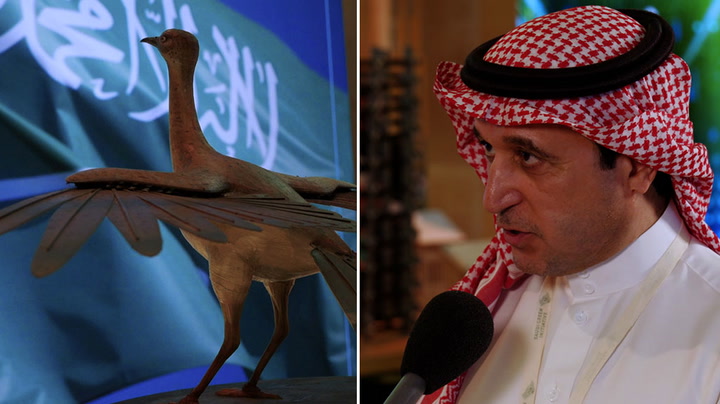The houbara’s flight from extinction
For Arab falconers, the houbara — a bug-eyed, long-necked, spindly-legged creature the size of a turkey — was always the king of game birds. Today, it’s a symbol of conservation in the Arabian Peninsula. How did it come back from the brink?
Not many bird species can lay claim to their very own museum. An exhibition perhaps, or maybe a dedicated area in an aviary, but a whole museum?
However, in May 2019, the world’s first — and probably only ever — houbara museum opened in Saudi Arabia’s Al Qassim Park, a joint project from the International Fund for Houbara Conservation (IFHC) and Saudi Arabia’s Al Qassim Region. Aimed at highlighting the importance of protecting the species, it bears testimony to the cultural and environmental importance of the Asian houbara.
So why does the houbara, with its long neck and spindly legs, hold such a special place in Arabic culture?

Falconry is a tradition that goes back millennia in Arabic culture. It’s so significant it has been inscribed on the UNESCO List of Intangible Cultural Heritage of Humanity. Much has remained unchanged in the sport over its long history. The hunter is always a falcon, and the houbara has always held the dubious honour of being the quarry of choice. Said to have aphrodisiac qualities, it is prized for its meat.
As long as hunting parties were small and the number of birds caught could be replenished, a balance was maintained. It is the huge increase in the scale of hunts that has left the houbara on the edge of extinction. Ahmed Boug, general director of terrestrial studies at Saudi Arabia’s National Center for Wildlife (NCW), says, “This activity has lasted for thousands of years, which means traditionally it was dealt with in a sustainable way. In the last decades, hunting has been carried out in an unsustainable way.”
With convoys of all-terrain vehicles now able to access areas that would once have been too remote or challenging to reach, and with flocks of falcons being flown each time, the number of birds killed per hunt has increased exponentially. Add to that habitat decline and an increase in the number of birds captured alive, in order to train falcons, the houbara is now classified as ‘vulnerable’ on the IUCN Red List.

Ironically, it may well be the houbara’s historical status as the falconer’s prey of choice that ultimately saves the species — no-one wants to see falconry or its main target disappear.
Partly, it’s a matter of education. As Boug explains, “One of the main pillars for any conservation programme is to share your work with the people. If you do not raise public awareness, for sure it will not succeed.” An important part of his job is meeting with falconers face-to-face and working with falconry clubs across the Arabian Peninsula, discussing efforts to reintroduce the species and how it can be more sustainably managed.
It is one prong of a multifarious approach that has seen the NCW run a captive breeding programme for the best part of four decades. “It has been a challenge,” says Boug, with some understatement. “Houbaras only have three or four chicks, not all of which survive. And you have to train the birds to return to the wild — because of all the time they’ve spent in captivity, they’re missing some of their natural behaviours.”

They also face the threat of predators, with foxes particularly adept at picking off young chicks from the ground. And there’s the thorny issue of interbreeding with the migrant species that overwinter in Saudi. But persistence is slowly paying off. “Finally, we’ve succeeded in establishing a sustainable breeding population in the Mazhat az-Sayd reserve,” says Ahmed. The idea is that it’ll be the first of a network of protected sites across the Kingdom.

He points to the NCW’s success in reintroducing other indigenous species as reasons to be cautiously optimistic about the houbara’s future. Red-necked ostriches, Nubian ibex and Arabian oryx now plod across the scrub of the Arabian Desert where just a few decades ago, there were none. Perhaps, in a few years, the houbara will join them.
To learn more about the Saudi Green Initiative, visit https://www.greeninitiatives.gov.sa/


